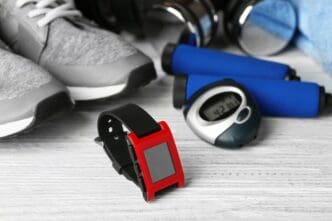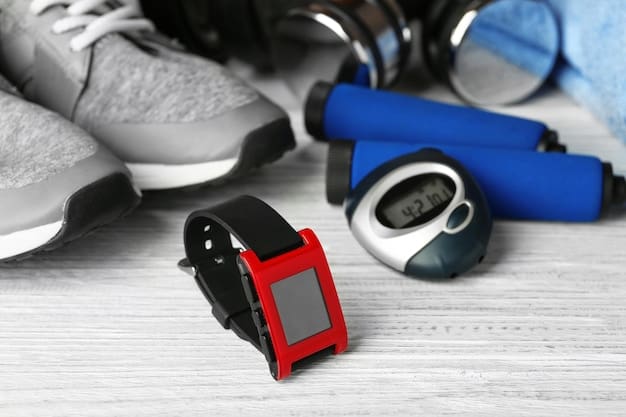For anyone starting their running journey, the question of what to wear can feel surprisingly complex. The key to building a sustainable and enjoyable habit lies not in expensive brand names, but in prioritizing function over fashion with gear designed for performance and comfort. The most critical considerations for a new runner are selecting proper running shoes fitted for their unique gait, choosing technical, moisture-wicking fabrics that pull sweat away from the skin, and dressing for the temperature their body will be mid-run, not at the starting line. Mastering these fundamentals prevents the chafing, blisters, and general discomfort that can derail progress, ensuring every run is a step toward better health and fitness.
The Foundation: Why Your Running Gear Matters
Before you even think about pace or distance, understanding the “why” behind specific running apparel is crucial. The right gear is your first line of defense against discomfort and injury.
The Golden Rule of Running Apparel
The single most important principle for dressing for a run is this: dress for 15 to 20 degrees Fahrenheit (or about 10 degrees Celsius) warmer than the actual outside temperature. When you start your run, you should feel slightly cool, even a bit chilly.
Your body is a powerful furnace that generates a tremendous amount of heat during exercise. Within the first 10 minutes, your core temperature will rise significantly. If you dress for the temperature on the thermostat, you will be overdressed, leading to excessive sweating, overheating, and a heavy, uncomfortable feeling that can cut your run short.
Fabric First: The Science of Wicking vs. Cotton
If you take away only one piece of advice about running clothes, let it be this: avoid cotton. While comfortable for lounging, cotton is a runner’s worst enemy because it acts like a sponge, absorbing moisture and holding it against your skin.
When wet, cotton becomes heavy, loses its insulating properties, and can cause painful chafing. In cold weather, this wet layer against your skin can dangerously lower your body temperature, increasing the risk of hypothermia. In warm weather, it prevents sweat from evaporating, which is your body’s primary cooling mechanism.
Instead, look for technical fabrics designed to be “moisture-wicking.” Materials like polyester, nylon, spandex, and merino wool are engineered to pull sweat away from your skin and move it to the fabric’s outer surface, where it can evaporate quickly. This process keeps you drier, lighter, more comfortable, and better able to regulate your body temperature in any weather.
Building Your Essential Running Kit from the Ground Up
You don’t need a closet full of gear to start. Focus on acquiring a few high-quality, functional pieces. Think of it as building a uniform for success.
Running Shoes: Your Most Critical Investment
Your shoes are the most important piece of equipment you will buy. They are not just for comfort; they are tools designed to support your body and reduce the impact of thousands of foot strikes. Wearing the wrong shoes is a fast track to common running injuries like shin splints, plantar fasciitis, and knee pain.
We strongly recommend visiting a specialty running store for your first pair. Trained staff can perform a gait analysis, where they observe you run on a treadmill to assess your foot’s movement. This helps determine if you have a neutral arch, overpronate (foot rolls too far inward), or supinate (foot rolls outward), allowing them to recommend the right category of shoe—neutral, stability, or motion control—for your specific needs.
Running shoes have a limited lifespan, typically lasting between 300 and 500 miles. Track your mileage and pay attention to signs of wear, such as compressed midsole foam or worn-down treads. Replacing them on time is a key part of injury prevention.
Running Socks: The Unsung Heroes of Comfort
Just as you should avoid cotton shirts, you must avoid cotton socks. Technical running socks made from synthetic blends or merino wool will wick sweat away, drastically reducing your risk of blisters. They often feature seamless toes to prevent rubbing and may offer targeted cushioning in high-impact areas like the heel and ball of the foot. A good pair of socks is an inexpensive upgrade that pays massive dividends in comfort.
Tops: Your Core Comfort Layer
For your upper body, start with one or two technical shirts. In warm weather, a short-sleeve shirt or a singlet (tank top) made from a moisture-wicking fabric is ideal. For cooler temperatures, a long-sleeve technical shirt provides more coverage while still managing moisture effectively. The fit should be comfortable—not too tight, but not so loose that it billows and chafes.
Bottoms: Shorts, Tights, and Capris
Running shorts are a staple. Look for a pair with a built-in liner, which acts as moisture-wicking underwear and helps prevent chafing. Inseam length is a matter of personal preference. For cooler weather, running tights or capris (which end mid-calf) offer warmth and coverage without restricting movement. Many running bottoms also include small pockets for keys or a gel, which is a convenient feature.
For Women: The Essential Sports Bra
A supportive sports bra is a non-negotiable piece of gear for female runners. Running is a high-impact activity, and a proper sports bra is essential for minimizing breast movement, which prevents pain and damage to supportive tissues. Look for bras specifically rated for high-impact activities. They come in two main styles: compression (which presses the breasts against the chest) and encapsulation (which supports each breast in a separate cup). The best choice depends on personal preference and cup size.
Dressing for the Elements: A Seasonal Guide
Once you have your basic kit, you can adapt it to the weather by layering and choosing the right pieces.
Hot and Humid Weather (Above 60°F / 15°C)
The goal in hot weather is to stay as cool and dry as possible. Opt for the lightest, most breathable gear you have. Choose light-colored clothing to reflect the sun’s rays. A singlet or loose-fitting short-sleeve shirt paired with shorts is a standard combination. A moisture-wicking hat or visor can shield your face from the sun and keep sweat from dripping into your eyes.
Mild Weather (40-60°F / 4-15°C)
This is where layering becomes important. You might start with a long-sleeve technical shirt over a short-sleeve one, or pair a t-shirt with tights instead of shorts. The flexibility allows you to remove a layer if you get too warm. Remember the 15-20 degree rule; you should feel cool at the start.
Cold Weather Running (Below 40°F / 4°C)
Running in the cold can be invigorating with the right gear. The key is a three-layer system:
- Base Layer: A snug, moisture-wicking long-sleeve shirt that sits against your skin to pull sweat away.
- Mid Layer: An insulating layer, like a fleece or heavier technical shirt, to trap body heat. This layer is optional and depends on how cold it is.
- Outer Layer: A shell, such as a windbreaker or water-resistant jacket, to protect you from wind and precipitation.
On your lower body, fleece-lined running tights provide excellent warmth. Don’t forget to protect your extremities, which lose heat the fastest.
Essential Accessories for Safety and Comfort
A few key accessories can significantly enhance your running experience and safety.
Headwear and Eyewear
In the summer, a running hat or visor provides sun protection. In the winter, a thermal beanie or headband made from technical fabric will prevent heat loss from your head and cover your ears. Sunglasses are also crucial year-round to protect your eyes from UV rays and reduce glare.
Gloves and Mittens
In cold weather, your hands will get cold quickly as your body directs blood flow to your working muscles. A pair of lightweight running gloves can make a huge difference. For very cold conditions, mittens are even warmer because they keep your fingers together to share heat.
Visibility and Safety Gear
If you run in the early morning, at dusk, or at night, being seen is paramount for your safety. Many running garments have built-in reflective details, but it’s wise to supplement this. Invest in a reflective vest, clip-on blinking lights, or a headlamp to ensure you are visible to drivers and cyclists.
Final Thoughts on Building Your Running Wardrobe
As you begin your running journey, remember that investing in the right apparel is an investment in yourself. It’s not about looking like a professional athlete on day one; it’s about providing your body with the comfort, support, and protection it needs to adapt and thrive. By prioritizing moisture-wicking fabrics, securing a proper pair of shoes, and learning to dress for the weather, you remove the most common barriers to consistency. This focus on function will ultimately empower you to build a healthy, sustainable, and deeply rewarding running practice for years to come.







